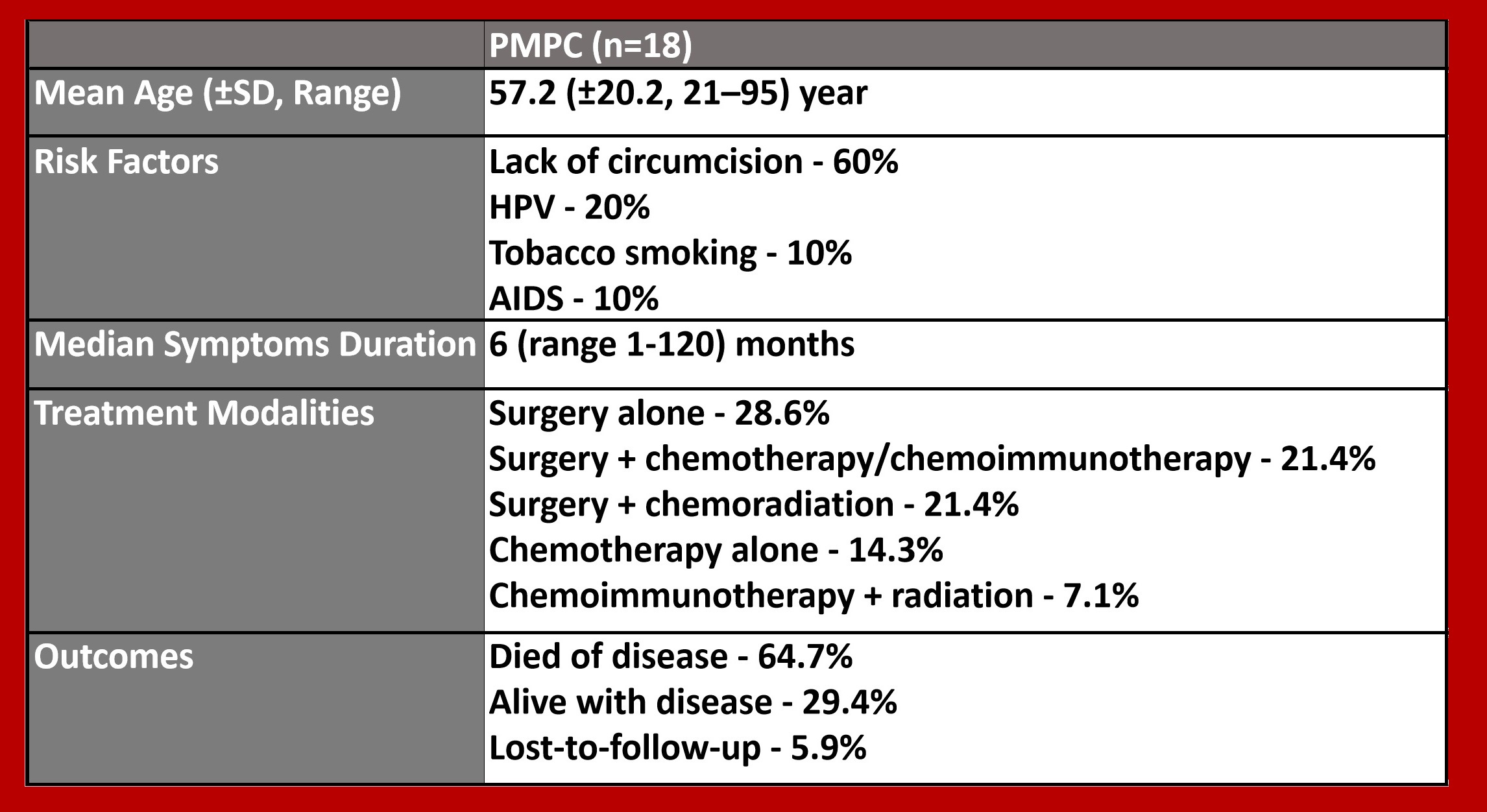Background: Primary Metastatic penile cancer (PMPC) is a rare condition, accounts for less than 1 percent of all men cancers in the United States. This review aims to investigate the clinical characteristics, treatment, and outcomes of Advanced-stage PMPC.
Methods: PubMed, Medline, Scopus, and ScienceDirect databases were reviewed for the published case reports on “primary penile cancer” from data inception to 2020.
Results: We recognized 18 cases of pathologically diagnosed with PMPC. The mean age at diagnosis (±SD, range) was 57.2 (±20.2, 21–95) years. Lack of circumcision, human papillomavirus (HPV), tobacco smoking, and acquired immunodeficiency syndrome (AIDS) were reported in 60%, 20%, 10%, and 10% of patients, respectively. Most commonly, patients presented with penile lesion(s) in 88.2% ( including 15.3% with penile ulceration), obstructive voiding symptoms in 5.9%, and phimosis in 5.9% of cases. The median symptoms’ reported duration at the time of presentation was 6 (range 1-120) months. Glans, shaft, balanopreputial sulcus, and prepuce were the initial tumor location in 43.5%, 26.1%, 17.4%, and 13.0% of patients, respectively. Lesions were multiple in 34.8% of cases. The median tumor size was 5.5 cm (range 2.2 cm – 10 cm). Squamous cell carcinoma (SqCC) and melanoma were the two most common types found in 9 (50.0%) and 3 (16.7%) patients, respectively. Other less common types were adenosquamous carcinoma, lymphoma, large-cell neuroendocrine carcinoma, angiosarcoma, leiomyosarcoma, and Ewing’s sarcoma. The three most common sites for metastasis, in descending order, were the lungs, liver, and skin in 35.3%, 29.4%, and 11.7% of cases, respectively. Treatment included surgery alone, with chemotherapy or chemoimmunotherapy, or with chemoradiation in 28.6%, 21.4%, and 21.4%, respectively. Chemotherapy alone was used in 14.3%, chemoimmunotherapy with radiation therapy was used in 7.1% of cases. The median duration for follow-up was 9 (range 0.5-24) months. Of those patients with PMPC, 64.7% died of disease, 29.4% alive with disease, and 5.9% lost-to-follow-up.
Conclusions: Prognosis in PMPC is poor, given the associated high mortality. Lack of circumcision and HPV infection were the two most common risk factors associated with advanced disease. SqCC was the most common type found in half of the patients. The most common treatment modality overall, in almost three-quarters of patients, was surgery—ranging from simple tumor excision to partial penectomy, total penectomy, or penoscrotal excision.

